News

10/06/2015
The Barcelona Synchrotron Park in the SmartReFlex European project
The Barcelona Synchrotron Park in the SmartReFlex European project
On June 9 and 10, the Barcelona Synchrotron Park (BSP) attends the 3rd workshop of the UE SmartReFlex project dedicated to district heating and cooling (DHC) systems.
The most remarkable BSP infrastructure is the polygeneration plant that produces electricity, hot and cool water that are distributed throughout the park. This DHC system offers BSP companies a significant simplification of their air-conditioning design and reduces energy costs (up to 20%). This system also helps to reduce the CO2 emission necessary to either heat or cool BSP buildings (up to 35%). Beside, the BSP DHC system provides the ALBA synchrotron with redundant electricity.
DHC systems are key elements in the urban development of the so-called smart cities and the European Union wants to promote their development: the SmartReFlex project aims at extending and using renewable energies-based DHC infrastructures.
This project gathers 14 partners from 5 different countries (Germany, Spain, Ireland, Denmark and Italy as the leader) and 6 study regions. For their own part, Catalan partners are the IREC energy research institute and the INCASOL regional agency in charge of the management of public lands that hosts the workshop.
Being one of the case studies, this project gives BSP an opportunity to make known its commitment to sustainability and to contribute to the development of these innovating infrastructures.
BSP local contact: Carlos Dapena
SmartReFlex project website
The most remarkable BSP infrastructure is the polygeneration plant that produces electricity, hot and cool water that are distributed throughout the park. This DHC system offers BSP companies a significant simplification of their air-conditioning design and reduces energy costs (up to 20%). This system also helps to reduce the CO2 emission necessary to either heat or cool BSP buildings (up to 35%). Beside, the BSP DHC system provides the ALBA synchrotron with redundant electricity.
DHC systems are key elements in the urban development of the so-called smart cities and the European Union wants to promote their development: the SmartReFlex project aims at extending and using renewable energies-based DHC infrastructures.
This project gathers 14 partners from 5 different countries (Germany, Spain, Ireland, Denmark and Italy as the leader) and 6 study regions. For their own part, Catalan partners are the IREC energy research institute and the INCASOL regional agency in charge of the management of public lands that hosts the workshop.
Being one of the case studies, this project gives BSP an opportunity to make known its commitment to sustainability and to contribute to the development of these innovating infrastructures.
BSP local contact: Carlos Dapena
SmartReFlex project website
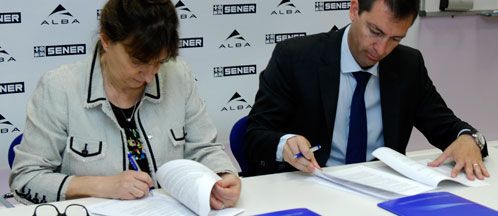
01/06/2015
SENER and ALBA sign a technology transfer agreement
SENER and ALBA sign a technology transfer agreement
SENER, devoted to engineering and construction, and the ALBA Synchrotron, both located in the Barcelona Synchrotron Park, have signed an agreement to commercialize a technological solution developed at ALBA: a new system to bend X-ray mirrors with higher precision at a competitive price.
The system has successfully been tested at the ALBA beamlines. When X-rays reach the beamlines, the mirrors are in charge of focusing the X-ray beam on the sample to analyse. The better polished the mirror’s surface is the better the experiments results will be. The X-ray mirror nanobender developed by the ALBA Synchrotron include correctors that compensate the errors on the mirror's polish.
"Our goal is to profit from ALBA's technological needs to be also useful for industry and society", stated Alejandro Sánchez, director of ALBA's industrial office. Guy Molenat, on behalf of the Barcelona Synchrotron Park (BSP) has been very satisfied for “the agreement between both entities which are strategical for the BSP". On the other hand, Joan Manel Casalta, business development director for astronomy and science at SENER, highlighted that "the company remains loyal to its compromise to search and invest in innovative technological solutions in collaboration with research institutions".
News based on the press release jointly issued by ALBA and SENER
Image: Òscar Julià, director of SENER-Catalonia, and Caterina Biscari, director of the ALBA Synchrotron, signing the agreement.
The system has successfully been tested at the ALBA beamlines. When X-rays reach the beamlines, the mirrors are in charge of focusing the X-ray beam on the sample to analyse. The better polished the mirror’s surface is the better the experiments results will be. The X-ray mirror nanobender developed by the ALBA Synchrotron include correctors that compensate the errors on the mirror's polish.
"Our goal is to profit from ALBA's technological needs to be also useful for industry and society", stated Alejandro Sánchez, director of ALBA's industrial office. Guy Molenat, on behalf of the Barcelona Synchrotron Park (BSP) has been very satisfied for “the agreement between both entities which are strategical for the BSP". On the other hand, Joan Manel Casalta, business development director for astronomy and science at SENER, highlighted that "the company remains loyal to its compromise to search and invest in innovative technological solutions in collaboration with research institutions".
News based on the press release jointly issued by ALBA and SENER
Image: Òscar Julià, director of SENER-Catalonia, and Caterina Biscari, director of the ALBA Synchrotron, signing the agreement.
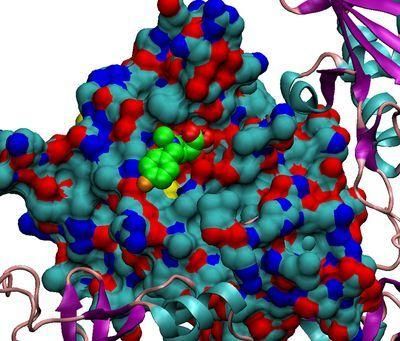
28/05/2015
Synchrotron light applications for the pharmaceutical industry
Synchrotron light applications for the pharmaceutical industry
More than forty people from the pharmaceutical sector attended the workshop organised by the ALBA Synchrotron on May 7.
Researchers from the MSPD, CLAESS, XALOC, NCD and MISTRAL ALBA beam lines have shown the available state-of-the-art techniques and the advantages that they offer in this field: fast data acquisition and shorter experiments, cost savings and, in the case of X-ray microscopy, suppression of ethical conflicts because this technique can be a previous step before clinical essays with animals and persons.
The companies Enantia and Almirall, which have already collaborated with the ALBA Synchrotron, have commented their own experiences at the facility. Enantia, specialised in research solutions for other companies, has detailed different examples. For Almirall, the analysis of polymorphic compounds – performed at ALBA – has increased its quality control, verifying and quantifying purity grades.
News based on the press release issued by the ALBA synchrotron.
Image: ALBA synchrotron. Structure of a herpesvirus nuclease-antiviral complex. Data collected at the Xaloc beam line (Bongarzone, S., Nadal, M. & Coll, M., IBMB)
Researchers from the MSPD, CLAESS, XALOC, NCD and MISTRAL ALBA beam lines have shown the available state-of-the-art techniques and the advantages that they offer in this field: fast data acquisition and shorter experiments, cost savings and, in the case of X-ray microscopy, suppression of ethical conflicts because this technique can be a previous step before clinical essays with animals and persons.
The companies Enantia and Almirall, which have already collaborated with the ALBA Synchrotron, have commented their own experiences at the facility. Enantia, specialised in research solutions for other companies, has detailed different examples. For Almirall, the analysis of polymorphic compounds – performed at ALBA – has increased its quality control, verifying and quantifying purity grades.
News based on the press release issued by the ALBA synchrotron.
Image: ALBA synchrotron. Structure of a herpesvirus nuclease-antiviral complex. Data collected at the Xaloc beam line (Bongarzone, S., Nadal, M. & Coll, M., IBMB)
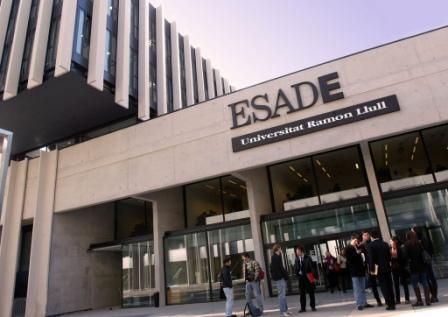
20/05/2015
Financial Times ranks ESADE 7th worldwide in open executive education programmes
Financial Times ranks ESADE 7th worldwide in open executive education programmes
In the immediate vicinity of the Barcelona Synchrotron Park, the presence of the ESADE business school and its ESADE CREAPOLIS business center should be noted.
ESADE has been ranked 7th worldwide in open executive education programmes by the Financial Times. In its annual ranking of executive education, the prestigious British daily has once again placed ESADE among the world’s top 10 business schools.
The ranking considered three categories of executive education: 1) open-enrolment programmes, in which ESADE rose to 7th place worldwide; 2) custom programmes for companies, in which ESADE took 12th place; and 3) a combined ranking that takes into account each school’s position in the other two categories, in which ESADE took 8th place.
The Financial Times also named ESADE the top school worldwide in post-programme follow-up for executive education alumni.
Congratulations!
News based on the press release issued by ESADE
ESADE has been ranked 7th worldwide in open executive education programmes by the Financial Times. In its annual ranking of executive education, the prestigious British daily has once again placed ESADE among the world’s top 10 business schools.
The ranking considered three categories of executive education: 1) open-enrolment programmes, in which ESADE rose to 7th place worldwide; 2) custom programmes for companies, in which ESADE took 12th place; and 3) a combined ranking that takes into account each school’s position in the other two categories, in which ESADE took 8th place.
The Financial Times also named ESADE the top school worldwide in post-programme follow-up for executive education alumni.
Congratulations!
News based on the press release issued by ESADE
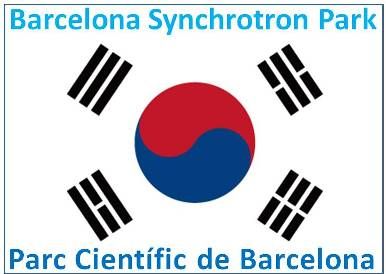
14/05/2015
Joint promotion in Korea of the Barcelona Synchrotron Park and the Parc Científic de Barcelona
Joint promotion in Korea of the Barcelona Synchrotron Park and the Parc Científic de Barcelona
Pablo Osuna has been in Seoul for two weeks now for, among other things, the joint promotion of the Barcelona Synchrotron Park (BSP) and the Parc Científic de Barcelona (PCB) to the Korean companies from the healthcare sector.
Pablo Osuna is an ICEX fellow, the Spanish agency for the internationalization of companies. In the coming 12 months, he will work for Pharmaphenix, the company selected to get the benefit of one of the fellows proposed by ICEX every year. Pharmaphenix is a consulting firm from the healthcare sector located at the PCB that helps worldwide companies grow their business. Pharmaphenix maintains special relationship with Korea with a five-person team working in Seoul.
BSP and PCB decided to work together with the support and the know-how of Pharmaphenix in order to jointly promote both parks as privileged locations in Europe for the setting of Korean companies.
Thinking about their internationalization, both parks want to join forces and present the complementarity of their offer in the strong context of the Catalan heathcare sector: on one hand, each park depends on one of the two large Catalan universities in life sciences (Barcelona University-UB for the PCB, Universitat Autonòma de Barcelona-UAB for the BSP) and offers a large science facility in this field (the National Center for Genome Analysis-CNAG at PCB and the ALBA synchrotron at BSP).
On the other hand, both parks have a complementary offer: the PCB proposes office and laboratory spaces and a wide range of scientific services for both small and large companies, especially from the life sciences sector, that want to take advantage of the stimulating environment of the wide park community. For its part, the BSP offers non-built-up plots for large and consolidated companies that look for a propitious environment to R&D and innovation made up of the high density of research centres and companies located around the synchrotron.
Pablo Osuna is an ICEX fellow, the Spanish agency for the internationalization of companies. In the coming 12 months, he will work for Pharmaphenix, the company selected to get the benefit of one of the fellows proposed by ICEX every year. Pharmaphenix is a consulting firm from the healthcare sector located at the PCB that helps worldwide companies grow their business. Pharmaphenix maintains special relationship with Korea with a five-person team working in Seoul.
BSP and PCB decided to work together with the support and the know-how of Pharmaphenix in order to jointly promote both parks as privileged locations in Europe for the setting of Korean companies.
Thinking about their internationalization, both parks want to join forces and present the complementarity of their offer in the strong context of the Catalan heathcare sector: on one hand, each park depends on one of the two large Catalan universities in life sciences (Barcelona University-UB for the PCB, Universitat Autonòma de Barcelona-UAB for the BSP) and offers a large science facility in this field (the National Center for Genome Analysis-CNAG at PCB and the ALBA synchrotron at BSP).
On the other hand, both parks have a complementary offer: the PCB proposes office and laboratory spaces and a wide range of scientific services for both small and large companies, especially from the life sciences sector, that want to take advantage of the stimulating environment of the wide park community. For its part, the BSP offers non-built-up plots for large and consolidated companies that look for a propitious environment to R&D and innovation made up of the high density of research centres and companies located around the synchrotron.
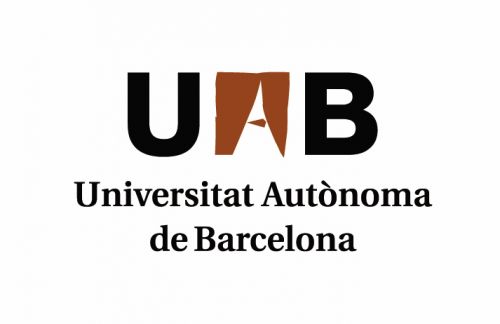
07/05/2015
The UAB ranks well
The UAB ranks well
According to the results of the fourth edition of the QS World University Rankings by Subject, which classifies the top 200 universities in the world (among 3,467 universities evaluated) according to 36 of their subjects, the UAB, partner of the Barcelona Synchrotron Park, is among the 100 top universities in eight disciplines:
Veterinary Medicine, Agricultural Sciences and Forestry, Physics, Geography, Communication Studies, Economics, Modern Languages and Mathematics. It ranks among the top 150 universities worldwide in Philosophy, Environmental Sciences, Psychology, Sociology, Education and Chemistry.
And among the 150 to 200 best universities worldwide, the UAB is present in Chemical Engineering, Medicine, Pharmacology, Geology, Accountancy and Finance, Politics and International Studies, and Statistics.
Moreover, the UAB ranks 29th in the Top 100 universities under 50 years old in the ranking published by the Times Higher Education.
This classification takes into account indicators such as influence, volume, reputation and income generated by research, academic programmes offered, innovation and transfer of knowledge generated and the degree of internationalisation of the university.
News based on the press releases issued by the UAB.
The QS ranking and the THE 100 under 50 ranking can be consulted on the internet.
Veterinary Medicine, Agricultural Sciences and Forestry, Physics, Geography, Communication Studies, Economics, Modern Languages and Mathematics. It ranks among the top 150 universities worldwide in Philosophy, Environmental Sciences, Psychology, Sociology, Education and Chemistry.
And among the 150 to 200 best universities worldwide, the UAB is present in Chemical Engineering, Medicine, Pharmacology, Geology, Accountancy and Finance, Politics and International Studies, and Statistics.
Moreover, the UAB ranks 29th in the Top 100 universities under 50 years old in the ranking published by the Times Higher Education.
This classification takes into account indicators such as influence, volume, reputation and income generated by research, academic programmes offered, innovation and transfer of knowledge generated and the degree of internationalisation of the university.
News based on the press releases issued by the UAB.
The QS ranking and the THE 100 under 50 ranking can be consulted on the internet.









